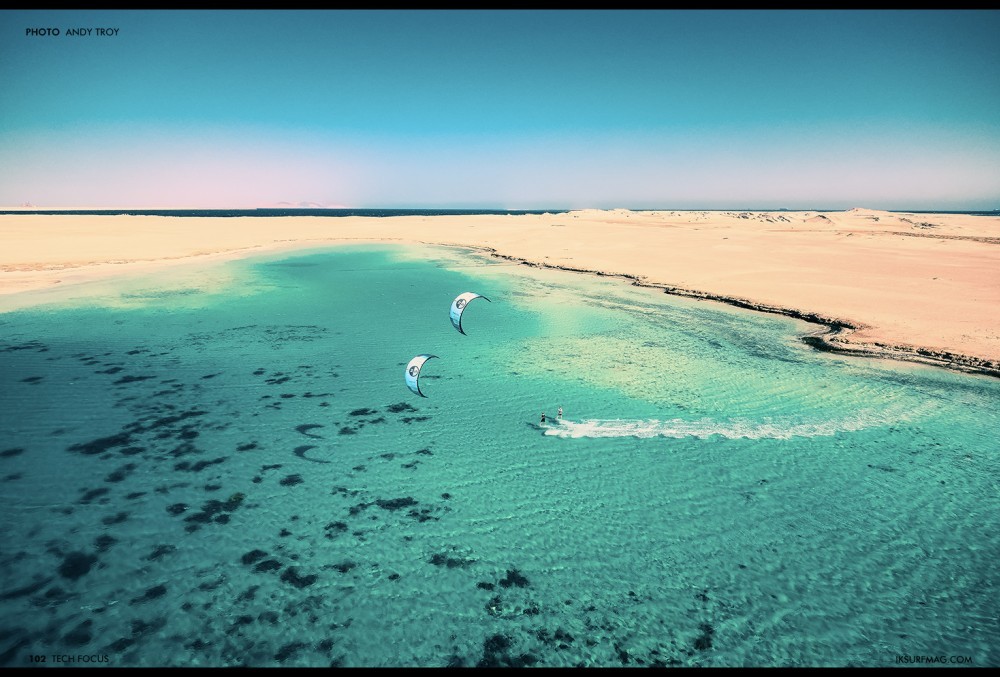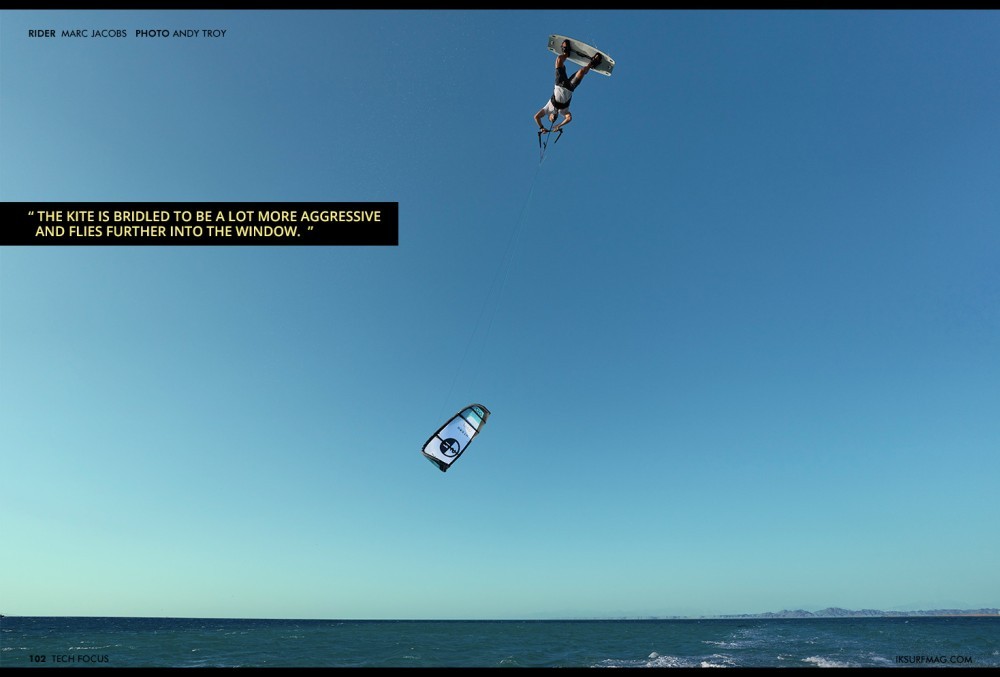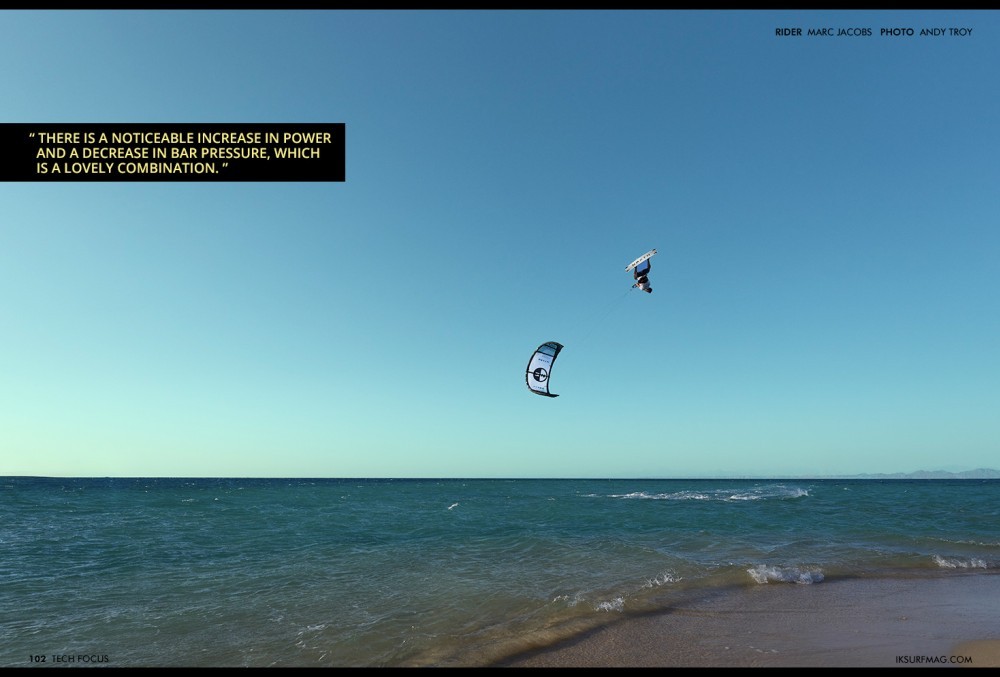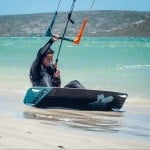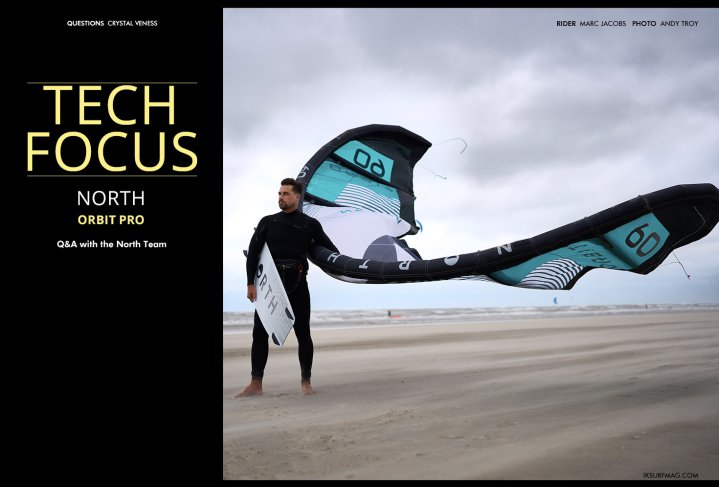
Tech Focus: North Orbit Pro
Issue 102 / Thu 14th Dec, 2023
The Orbit Pro sprung onto the big air scene at this year's Red Bull Megaloop and has been a regular on big air podiums since its launch! Is this the tool the pros need to unlock their maximum potential, or can the Average Joe get something out of it as well? We ask the team at North for insight!
The Orbit Pro has just been announced, although big air fans have had a chance to see it in action during the last few big air events, and it's already making an impression! Tell us about the new kite!
The newly launched Orbit Pro is competition-optimised to land the highest-scoring tricks and engineered lighter, with faster steering, for more extreme boosting and looping. Not for the faint-hearted, the Orbit Pro lets you exploit increased pressure systems at altitude for greater power and gives you the hangtime you need to win the heat.
One of the most exciting elements of this new kite is the N-Max airframe, a new composite material exclusive to North. What features of this material make it ideal for the Orbit Pro?
The Orbit Pro airframe is constructed with N-MAX, a multi-coated composite material which ensures the airframe meets structural stiffness and durability demands, without adding unnecessary weight. N-Max is 13% lighter and has 21 % lower elongation than standard Dacron. The multi-layer structure of this new material improves the tear strength five times. N-Max also has a more balanced weave for a crisp, lively feel. The symmetrical yarn pattern gives the material a lower bias elongation, which snaps back to its original shape faster and provides the kite with a crisp response, more precise steering and more dynamic recovery. Click here to learn more about N-Max.
The price point of the Pro is about 10% higher than the Orbit standard construction, which is significantly less than an Aluula kite would be. Was price point the main reason to avoid Aluula, or were there other elements of Aluula's performance that didn't work for the Orbit Pro?
The Orbit Pro is way more affordable compared to Aluula kites, and it's outperforming all the top-end Big Air kites. We are onto a winner; literally, it's been on all three of the most recent podiums. It's got the best of the Orbit DNA, and it's faster and lighter: what's not to like? Orbit Pro is way closer in retail price to an Orbit compared to the overpriced Aluula kites. The brief for this kite was to make an affordable, high-performance big air kite that's not going to break the bank.
Does being part of the North Sails family allow the North Kiteboarding design team unique access to new materials? Is the N-Max material used in any other North products, such as wings or windsurf sails?
Access to North Sails Advanced Textiles certainly is a plus, as it does give us access to exclusive materials and the resources to develop our own. This isn't always easy, though, as we have to take on all the development process risks as well. N-Max is just used for kites at the moment.
Weight-saving isn't only achieved by choosing a lighter material. What other design changes were made to make the Orbit Pro as light as possible?
Its efficient, weight-saving design features lighter N-Max, stripped-back scuff guards, the lightest bladders, reduced HyperFlow hardware and steering impulse attachment points. The lighter weight means increased amplitude, faster turning, faster catch and recovery, and unsurpassed top-end control and performance.
What else was changed in the Orbit Pro design besides construction to make it a competition beast?
The kite is bridled to be a lot more aggressive and flies further into the window. This makes it a little less suitable for starting out on loops, but once you've mastered them, this will help you get to the next level of tricks.
How does it feel to fly a lightweight kite like this? What would a rider feel if they were to fly an Orbit and Orbit Pro back to back?
Mike: "The Classic Orbit is still your advanced intermediate rider's kite for learning how to jump and loop; it is more stable and predictable in gusty conditions. Whereas the new Orbit Pro allows pro-riders to push the boundaries in the competitive arena.
Jason Montreal, in his YouTube review of the Orbit Pro, said: "This kite is called the Pro for a reason, and it rides like it. It is lighter, quicker and more responsive – which means an overall improvement in the total potential performance. But I do feel that this comes at a slight cost in stability and ease of use for the average rider, particularly in stronger, gustier winds. An experienced rider is not going to suffer these issues, but with reduced weight and increased speed, everything will feel a little less stable. There is a noticeable increase in power and a decrease in bar pressure, which is a lovely combination. The kite shoots forward rapidly, which is great if you can time it with your boosts, but can also be a real challenge not to overfly the kite. Once you get the hang of that speed and movement pattern, it's bloody lovely. You can tell this kite was designed for modern comp-level riding – it must be a monster for double loops with how fast it gets around, and the improved response with less pressure makes it a lot easier to control with one hand, leaving the other free for grabs or board-offs. I would suggest that unless you already have your big kite loops on lock and are confident riding super-lit, jumping over 15-20m on the regular, the advantages of the Pro versus the standard Orbit are likely to hinder your progress."
The tagline, "Not for the faint-hearted", indicates that this may not be a beginner-friendly kite! Does the Orbit Pro have flying characteristics that aren't for the casual rider? What are they?
Mike: "The new Orbit Pro is lighter, faster and has an immediate response. It's easy to pull big, slow loops with soft landings because of the way it flies forward to the edge of the window, but it is definitely more of an advanced rider's kite because of its speed and the high level of input required.
It looks like the entire big air team has jumped on the Orbit Pro! What feedback have they shared about the new kite?!
North Team Rider Luca Ceruti, who placed second in Tarifa at the BAKL, says: "I love that the smallest bit of input is translated to motion. The Orbit Pro allows more control to arrest forward speed and gives you extra hang time. It's much easier to pinpoint where you want the kite to go during one-handed loops, as when you stop turning pressure on the bar, it immediately goes straight."
Former King of the Air Marc Jacobs says the kite is the lightest and the highest-performing Orbit yet. "The new Pro is faster and quicker catching in the loops. It also sits in the wind window further, allowing me to hold a better edge in stronger conditions and giving more vertical lift and hang time. The Orbit Pro is designed to really advance your technical skills – if you can already loop, this is the kite you'll double loop."
If you want a Big Air kite that goes big, double-loops, catches you on the landing, is durable and crazy fun to ride, then give the Orbit Pro a go.
We've seen our athletes podium on the Orbit Pro at every event they've ridden on it this season. It's really helped them perform, and we're very excited for the Red Bull King of the Air.
Videos
By Crystal Veness
Editor at IKSURFMAG, Crystal Veness hails from Canada but is based in South Africa. When she isn't busy kitesurfing or reporting on the latest industry news for the mag, she is kicking back somewhere at a windy kite beach or working on creative media projects.




